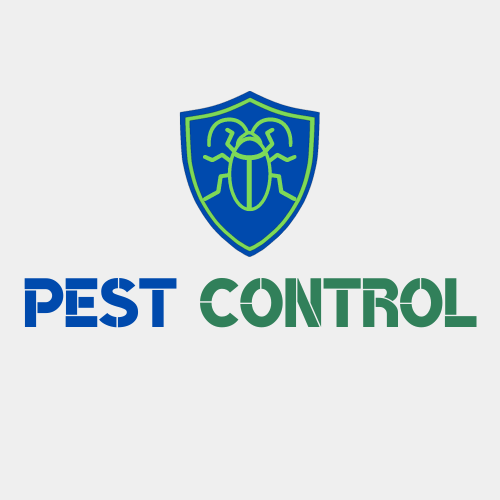Effective Pest Control Strategies: A Comprehensive Approach
In the ever-evolving arenas of pest control, professionals are tasked not only with eradicating existing pest populations but also with anticipating and preventing infestations. The modern approach to pest management involves a multitude of strategies designed to improve efficacy and enhance safety for both people and the environment. In this article, we delve into the critical components of pest control tailored to specific needs, using the example of pest management operations in 67280 Monte Kristal Cuarto Sector, Juárez.
Understanding Pest Populations
Before implementing any pest control strategy, it is vital to monitor and assess existing pest populations rigorously. Improved monitoring of pest populations not only aids in identifying the specific types of pests present in an area but also provides insight into their behavior and nesting habits. Enhanced monitoring systems can include a combination of traps, visual inspections, and even digital monitoring solutions that utilize sensors and data analytics to provide real-time insights.
Digital Pest Monitoring Solutions
Adopting digital pest monitoring solutions represents a significant leap forward in pest management. These systems allow pest control professionals to gather and analyze data regarding pest activity, enabling more precise and timely interventions. This technology facilitates proactive measures, reducing the reliance on reactive approaches which often involve extensive treatments after an infestation has already taken hold. By utilizing these digital solutions, pest management companies can increase efficiency and reduce costs, ensuring better service for clients in areas like 67280 Monte Kristal Cuarto Sector, Juárez.
Proper Pesticide Application Methods
When it comes to controlling pest populations, the methods employed to apply pesticides are just as important as the products themselves. Proper pesticide application methods are crucial in maximizing efficiency while minimizing risks to human health and the environment. This involves understanding the specific life cycles and behavioral patterns of the targeted pests, to ensure that treatments are applied at the most effective times.
Furthermore, integrated pest management (IPM) strategies recommend the selective use of pesticides at the right dosage and with appropriate techniques. Professionals must consider factors such as wind, humidity, and the time of day to decrease drift and enhance adherence to the targeted surfaces, thereby improving the overall efficacy of the treatment.
Targeting Termite Infestations
Termites can cause significant structural damage to buildings, and managing these pests requires specific strategies. One of the foremost methods in termite control is applying liquid termiticides to foundations. This treatment forms a chemical barrier around the base of buildings, preventing termites from accessing structural wood. Regular inspections and treatments should be conducted to maintain this barrier, especially in areas prone to termite activity such as 67280 Monte Kristal Cuarto Sector, Juárez.
In addition, the use of non-repellent chemical treatments to disrupt termite colonies can contribute significantly to effective termite control. These treatments are designed to be undetectable by the termites, allowing them to encounter and transport the chemicals back to their colony without suspicion. This not only helps to eliminate the individual termites but also disrupts the colony’s behavior and reproductive capabilities, ultimately leading to colony collapse.
The Importance of Monitoring Rodent Activity
Rodent infestations pose not only structural risks but also serious health hazards, particularly in food-handling areas. Monitoring for rodent activity in these critical zones is essential to preventing contamination and protecting public health. Effective pest control programs should incorporate routine inspections, using traps and bait stations strategically positioned in areas where rodent activity is suspected.
Education plays a vital role here, and stakeholders in food businesses must be trained to recognize telltale signs of rodent presence, such as droppings or gnaw marks. Proactive measures, including thorough sanitation, proper food storage, and sealing entry points, can significantly reduce the likelihood of rodent infestations.
Integrating Pest Control Strategies
The most successful pest control programs are those that integrate various strategies into a cohesive approach. This includes regular monitoring, proper pesticide application, targeted treatments for specific pests, and education for property owners and workers.
For instance, in residential areas like Monte Kristal Cuarto Sector, Juárez, homeowners can benefit from educational programs that inform them about the importance of sanitation and structural integrity in preventing pest infestations. Simple actions such as fixing water leaks, maintaining clean gutters, and sealing cracks in foundations can greatly decrease the likelihood of pests taking up residence in their homes.
Sustaining Pest Management Initiatives
Sustainability is becoming increasingly important in pest management. Many pest control companies are now prioritizing environmentally friendly strategies that reduce the use of harmful chemicals. By focusing on prevention and employing non-toxic methods whenever possible, professionals can provide effective pest control solutions that are safe for residents and the surrounding ecosystem.
This commitment to sustainability aligns with broader efforts to preserve biodiversity and protect natural resources. By combining modern technology, rigorous monitoring, and environmentally responsible practices, pest control services can offer comprehensive solutions tailored to meet the unique needs of clients across various sectors.
Conclusion
In conclusion, effective pest control in areas like 67280 Monte Kristal Cuarto Sector, Juárez, requires a multi-faceted approach that includes intense monitoring of pest populations, proper pesticide application methods, and the adoption of digital solutions. With advancements in the field, pest management can be both efficient and environmentally sound. By prioritizing education and sustainable practices, pest control professionals can not only solve immediate pest problems but also work towards preventing future infestations, ensuring a healthier and safer environment for all.
By understanding and implementing these key strategies, we can pave the way to more effective, sustainable, and socially responsible pest management in our communities.
